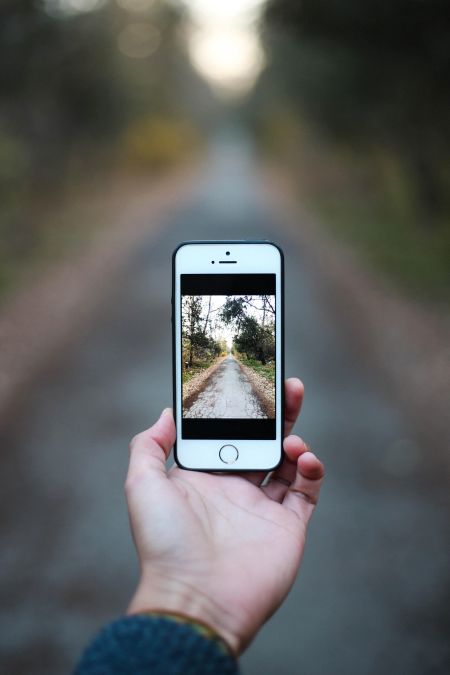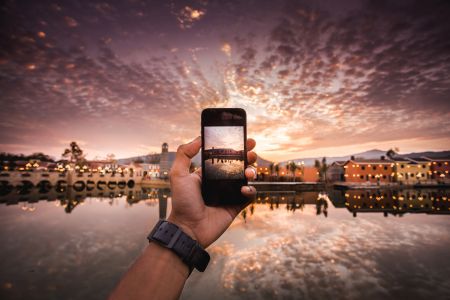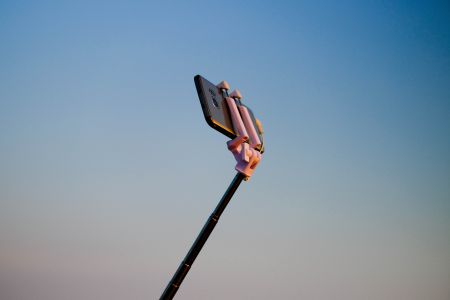Do you prefer to take photos with your mobile phone or with your camera?
Do you stow a clunky camera in your luggage for a holiday or weekend getaway? Do you take a camera with you when you travel to visit family, relatives and friends? Even if you are an ambitious amateur photographer and probably have an affinity for cameras, you will probably leave the cumbersome, heavy camera at home from time to time and use your smartphone for spontaneous photos. The mobile phone as an "always-on camera".
The new smartphones make mobile phone photography possible. With the built-in camera lenses, anyone can now take excellent photos. But can a mobile phone really replace a camera? What technical features are important, what are the differences?

Thanks to numerous camera lenses, ever higher resolutions and a wide range of functions, the simple smartphone cameras of earlier years have developed into cameras with extremely useful features. Mobile phone photography has long since outgrown its infancy and the best thing about it is that almost everyone always has their smartphone with them anyway. For many photo fans, mobile phone photography fulfils the dream of being a hobby photographer. Even without special expertise and expensive equipment.
What should you look for when buying your next mobile phone if taking photos with your mobile phone is simply part of your life? Which smartphones can produce good picture results that can be integrated into a photo album without any problems? Fotoalbum-Discount brings light into the darkness. Very striking: of the ten mobile phones with the best camera, seven models come from Samsung.
What can mobile phone photography do and what makes a good mobile phone camera?
At the latest since smartphone cameras can offer three different focal lengths - wide-angle, standard and telephoto - the roughly pixelated zoom shots are history. In mobile phone photography, the image quality of the new smartphones is quite sufficient for almost all snapshot situations. In the new smartphones, camera units with three, four or more lenses are no longer unusual. Models with even more lenses have not been able to establish themselves on the market. Instead, the current models use their enormous computing power to make the most of the given possibilities.

With lower-resolution smartphones, one of the biggest problems is the small sensor, as the image sensor has to be integrated into the overall design of the phone. Although all smartphone manufacturers are now aware of the importance of camera performance, there is still only limited space for sensors and optics. In order to achieve a high resolution despite the correspondingly small image sensors, the individual pixels have to be very small.
A smartphone camera therefore combines several lens elements and image sensors in a very small space. Smartphone manufacturers are therefore forced to focus primarily on technology when it comes to image quality. Almost all current models offer an optical image stabiliser that effectively reduces camera shake. In addition, in mobile phone photography, many shooting modes combine several shots into one image.
Another interesting aspect is the depth of field. Since the focal length of a smartphone lens is only a few millimetres short, even a relatively small aperture diameter allows for a large open aperture when photographing with a mobile phone.
In other respects, too, a smartphone camera leaves the user little creative leeway. Although almost all models offer numerous modes (e.g. night, portrait, macro), manual settings are only useful to a limited extent. There are several reasons for this: Firstly, the aperture of a smartphone lens cannot usually be varied. So this setting falls flat. Furthermore, due to its shape and the lack of physical buttons and wheels, a smartphone is only very poorly suited for making settings while taking photos. The vast majority of users who prefer taking photos with a mobile phone probably don't want to do that either. It is also not really necessary, because the different modes are controlled automatically but deliver very good results in most cases.
If a backlit subject is too dark, the exposure can be increased with the swipe of a finger. There is no need for more manual operation when taking photos with a mobile phone.

The fact that smartphone cameras are primarily aimed at users who do not want to concern themselves further with the technology behind them can be seen not only in the automatic modes but also in quite another area, namely the minimalist details provided by the manufacturers.
In summary, it can be said that taking photos with a mobile phone has become the norm and the perfect complement to taking photos with a camera. Thanks to the technical features of smartphones, every user can find the perfect mobile phone that meets all their individual requirements. Finding the best mobile phone for photography is no longer a problem nowadays, as the new smartphones all offer similar features as standard. So to always be ready for the perfect snapshot, taking photos with a mobile phone is nowadays indispensable.





